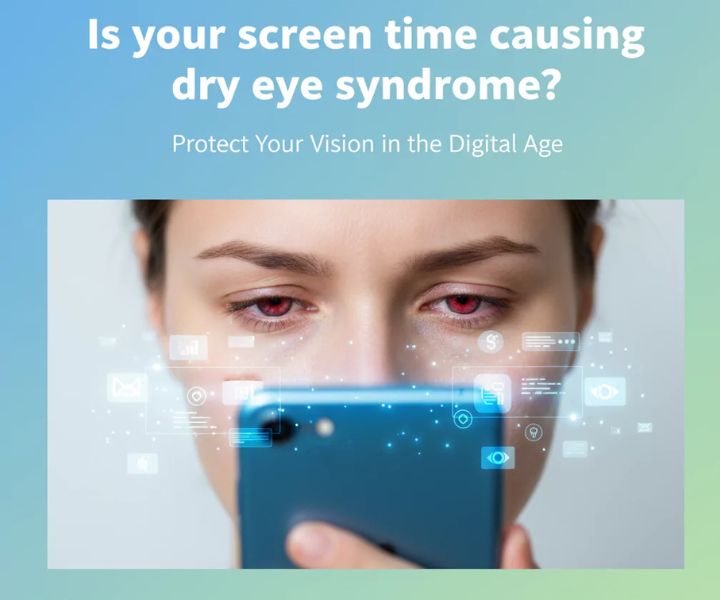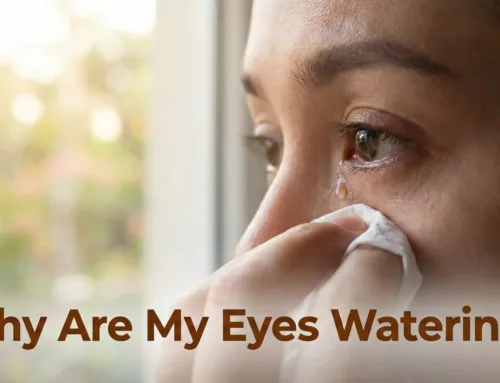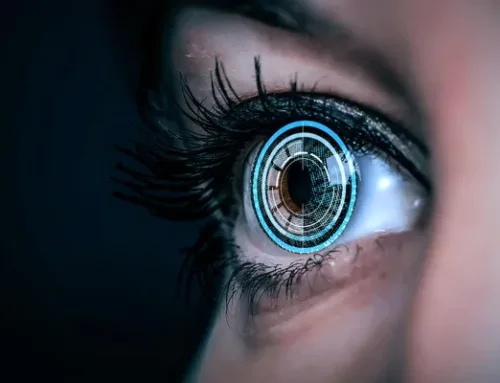Do Screens Cause Dry Eyes? How to Prevent and Relieve Symptoms
Screens are a part of nearly every aspect of our lives. We use them at work, at home, and even on the go. While they’ve made life more convenient and connected, they can also have a downside—especially for our eyes. One of the most common side effects of long hours spent on digital devices is dry eye syndrome.
If your eyes often feel tired, irritated, or watery after using screens, you’re not alone. Let’s take a closer look at why this happens and what you can do to prevent it.
What Is Dry Eye Syndrome?
Dry eye syndrome happens when your eyes don’t make enough tears, or when the tears evaporate too quickly. Without a healthy tear film, your eyes can feel:
- Gritty or scratchy
- Red and irritated
- Tired or blurry, especially after reading or screen use
- Sensitive to light
While there are many possible causes, spending long stretches staring at screens has become one of the leading contributors.
How Screen Time Leads to Dry Eyes?
One of the biggest reasons screens cause dryness is simple: when we look at screens, we blink less—sometimes up to 60% less than normal. Blinking helps spread tears across your eyes and keeps them from drying out.
With fewer blinks, your eyes are left exposed to air, which makes tears evaporate faster and leaves your eyes feeling dry, strained, and irritated.
How to Prevent Digital Dry Eye?
You don’t need to give up your devices to protect your eyes. A few simple changes can go a long way:
Follow the 20-20-20 rule
Every 20 minutes, look at something about 20 feet away for 20 seconds. This gives your eyes a chance to relax and reset.
Blink more often
Make a conscious effort to blink fully and frequently while working on screens. If your eyes start to feel dry, gently close them for a few seconds to help refresh the tear film.
Use artificial tears
Lubricating eye drops can help supplement your natural tears, especially during long screen sessions.
Adjust your screen setup
Position your screen slightly below eye level so your eyelids cover more of your eyes. Reduce screen glare and match screen brightness to the room’s lighting.
Control your environment
Avoid sitting directly under air vents or fans, and consider using a humidifier if the air in your space is dry.
When to See an Eye Doctor?
If your eyes still feel dry, irritated, or blurry even after making these adjustments, it’s worth getting them checked. An eye doctor can evaluate your tear production, rule out other issues, and recommend treatments like prescription eye drops or other therapies.
The Bottom Line
Screen time is a part of modern life, but dry eyes don’t have to be. With a few mindful habits and regular breaks, you can keep your eyes comfortable, healthy, and ready for whatever your day brings.








